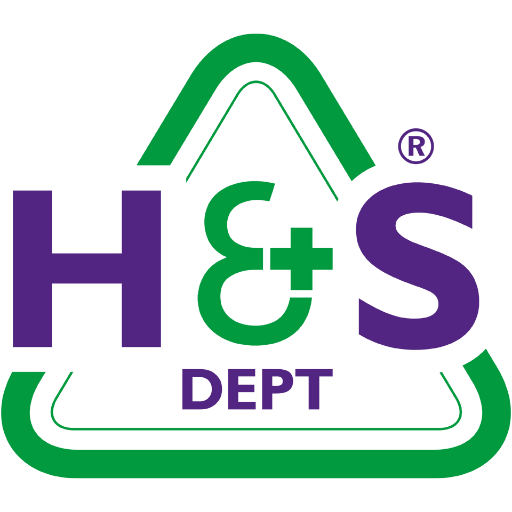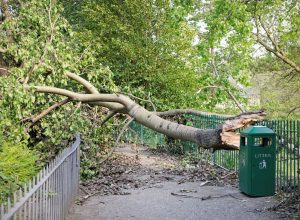Don’t risk exposure to diacetyl vapour
The HSE has issued an urgent warning about the chemical diacetyl. When heated, the substance produces a vapour that can cause irreversible damage to the lungs. If you work with diacetyl, you need to act immediately to ensure the safety of your employees.
Coffee manufacturers and flavour manufacturers are particularly at risk. The roasting and grinding of coffee beans can produce unsafe levels of diacetyl vapour, especially if the beans are ground when warm. Diacetyl is commonly used to make artificial flavourings. Workers can be exposed to dangerous levels of diacetyl vapour if it is heated or spray dried during this process.
Coffee manufacturers can reduce the risk by cooling beans to room temperature before grinding. Producers of artificial flavourings should take the following steps:
- Contact suppliers to check if diacetyl is present in food flavourings
- Take samples and check diacetyl levels against workplace exposure limits.
- Substitute diacetyl with a safer alternative where possible
- Minimise risk by keeping temperatures low and adding diacetyl at the latest possible stage of production
- Provide respiratory PPE if exposure levels are still too high
This is a serious issue that requires immediate attention. If you’re unsure about anything or just want to discuss this in more detail, don’t hesitate to ask.
What does the repealing of EU laws mean for workplace health and safety?

Britain kept many European laws after Brexit, but this could be about to change. The EU Law (Revocation and Reform) Bill is currently working its way through parliament. If it passes, all laws originating in Europe will be repealed on 31st December 2023 unless they have been incorporated into UK national law.
This would have huge repercussions for employers. Some of the most significant pieces of H&S legislation are underpinned by EU law, including key parts of the Health and Safety at Work Act, the Manual Handling Operations Regulations and the guidelines covering display screen equipment.
There is no guarantee that the bill will go through in its current guise, but we’ll certainly be keeping an eye on it. Watch this space for updates.
Tree safety: what you need to know as an employer
You may remember the terrible story of a six year old being killed by a falling tree in September 2020. She was playing with friends in a school playground. The tree had rotted, causing it to fall on the girl. She was rushed to hospital but died the next day.
This may seem like a freak accident, but negligence was also a factor. An HSE investigation found that Newcastle City Council had failed to identify the decaying tree, and had taken no steps to reduce the danger. Last month, the Council was prosecuted and fined £280,000.
This tragedy highlights the importance of tree safety in public spaces. If your workplace contains trees, you have a duty to protect employees, customers and passers-by from falling debris. Here’s what the law says, and what you can do to reduce the risk.
On a basic level, tree safety is covered by The Health and Safety at Work Act. This requires employers to reduce workplace risks “as far as is reasonably practicable”. This doesn’t mean inspecting every tree, but it does mean being aware of high-risk areas and taking the necessary steps to mitigate the danger.
This is where a second piece of legislation comes in. The HSE recommends that duty holders put a system in place “to control risks from trees to their employees, contractors and members of the public”. In order to be effective, this system should be designed in accordance with the Management of Health and Safety at Work Regulations 1999.
As a minimum, wooded areas should be split into two zones. Zone One refers to areas that are regularly accessed by the public, such as parks, picnic areas, playgrounds and car parks. Zone Two covers places that are rarely or never visited.
For areas classified as Zone One, the following kind of steps are advisable:
- Perform regular visual checks on trees to look for signs of instability
- Record the results of these inspections, including details of any defects found and any actions taken
- Put a system in place for requesting specialist help when serious defects are discovered
- Create a way for the public to report damaged trees
- Restrict access to zone one areas during extreme weather
- A system of assessment to ensure measures are carried out
The chances of an accident involving a tree may seem small, but the danger is very real. For help with zoning, tree management or anything else, don’t hesitate to get in touch.
Being ready if an employee suffers a heart attack
Every February, the USA celebrates Heart Health Month, a national campaign designed to raise awareness of heart disease. The event may not have made its way to Britain yet, but it’s still a good prompt to talk about cardiac emergencies at work.
Out-of-hospital cardiac arrests have a survival rate of just 10%, and are responsible for 30,000 deaths a year in the UK. Acting quickly in this situation can mean the difference between life and death, so it’s important to recognise the signs of a heart attack. These include:
- Chest pain that spreads to the arms, neck and back
- Breathlessness
- Nausea
- Sweating
If an employee experiences these symptoms, you should call 999 at once. Help them to sit down and reassure them while you wait for an ambulance.
The most serious form of heart attack is cardiac arrest. This is when the heart stops working completely, causing a person to become unresponsive. If this happens, you should call an ambulance immediately and administer CPR.
You could also consider investing in a defibrillator. These have come down in price in recent years, and can greatly increase the chances of survival in the event of a cardiac arrest.
The law requires every workplace with 25 or more employees to have at least one qualified first-aider, but there’s no harm in training more. Our Emergency First Aid course gives employees the skills they need to deal with heart attacks and other medical emergencies. Give us a call to find out more.
Accreditation of the month – CHAS

Over the next few months, we take a closer look at major H&S accreditations to help you decide which is right for you. Up first – CHAS.
CHAS stands for Contractors Health and Safety Assessment Scheme. It is the UK’s biggest H&S accreditation for contractors, especially those working in the construction industry.
In order to achieve CHAS accreditation, you must demonstrate compliance in 13 areas of risk management. This involves completing an assessment and submitting detailed evidence of your safety practices.
CHAS accreditation is money well spent. Many higher-end customers will only consider bids from accredited contractors, so the financial benefits can be significant. CHAS accreditation also saves you time by eliminating the need to resubmit your H&S credentials with every new bid.
CHAS applications can be exhausting, and there’s no guarantee of success. Luckily, we can help. From evaluating your safety protocols to double checking your submitted documents, we’ll make sure that you get it right on the first try. Give us a call to find out more.




